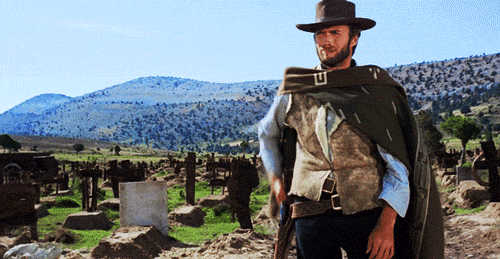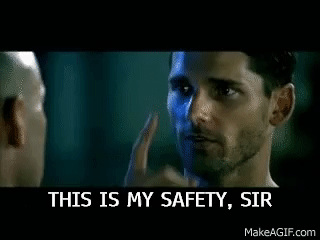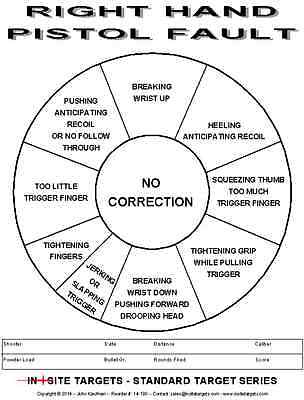| Author | Message | ||
Rick_a |
A snubnose 357 or lightweight 38 are some of the most difficult handguns to use proficiently. That said, I do like them as they're fun to shoot and make relatively practical deep concealment pieces. Guns that are unchallenging to shoot well get boring. A S&W compact is a great choice if you're willing to carry it. The Shield is a bit more practical for daily carry. It's good to have choices. My current carry rotation has several guns that are carried in various ways. The dress, temperature, and venue tend to determine what is with me. | ||
Aesquire |
The cheap muffs from Midway USA house brand are excellent. Built in stereo mics & speakers. Not as much amplification as Wolf Ears, but more than ambient. For the range, or the house, you can hear normal speech, even amplified a bit super hearing, then they cut off the boom completely. That's a real tactical advantage when you don't lose hearing. At outdoor IPSC matches with repeated, rapid fire strings, the clipping makes a conversation right behind the line possible, and if everyone pauses their jaws during loud noises, enjoyable. Weird, at first. The higher end hunting muffs, boast high amplification so you can hear the rabbit breathing.  then clip the loud. then clip the loud. The downside of muffs is long arms, a cheek weld often touched the muffs to the stock, possibly shifting them, depending. Not my problem, but I could hear everything happening in the rifle. On my now long gone AR with the two stage match trigger, the "schlooong" of the recoil spring was obviously loud, but not unbearable. If you've ever seen The Quick And The Dead, there's a plot point about the click the town clock makes just before the hands hit 12. With my old trigger, it made that same click as the first stage set, leaving 6 ounces of pull to fire. Amplified by the muffs, ( or even bone conduction with just plugs ) always reminded me of that movie. The singing tension in that moment of firing. Others dislike 2 stage triggers, but that one worked for me. So if you shoot rifle or shotgun, electronic plugs are the way to go, and worth the money. Imho. As to gun choice? I'm going through that myself. Get what fits you, and has the switch/safety arrangement you like. Screw anyone's prejudices against Tupperware guns, etc. Your hands, your choice. | ||
Ratbuell |
And, my safety. Hopefully it never comes to it, but if it does...no sense having "your" favorite sidearm in my hands if it doesn't do the job right for me when the chips are down and it really matters. | ||
Ourdee |
There are so many choices today that I had trouble making my mind up to post. But, knowing it was you (Joe), I got over it. I do have some don'ts. Don't get a LLama. The one I had would come off safe on it's own. No matter what kind of safety you do or don't get on the gun YOU like, remember the final safety is to keep your booger hook off the trigger till it's hammer time. I'm just full of CAUTIONS: today. Be mindful that some of those holsters with the index finger button may set you up to pull or bump the trigger when drawing. I had a plastic Blackhawk holster for my XDS that was an ergo nightmare for that reason. I'm most cautious when re-holstering that loose clothing or anything else isn't snagging the trigger. I prefer carry pieces without safeties. When I carried 1911s I trained with the safety all the time. I like double actions and train for that long pull on the first shot now. | ||
Ourdee |
There are a lot of opinions on the web that don't separate law enforcement goals from private citizen goals in the use of a firearm. I think this video is good in the points it brings up. | ||
Ratbuell |
I grew up around rifles, and in a house full of sidearms (dad was CMDR-USN/ret). Finger only goes on the trigger when you're ready for the weapon to go off. Firearms get pointed at only ONE thing, ever - the target you're going to shoot. Not your buddy, not his dog, not the car - if the gun is pointed at it, it IS the target. Period. I like the 2-stage trigger that was on the M&P yesterday - have to roll your finger and use the lowest tip of the trigger in order to actually fire. Glock (I think that's what it was) uses a similar setup but it looks like an actual second trigger that you pull first, back to the main, to enable the main to move. M&P also had a secondary thumb lever; might get one without, just for holster use. For a holster, my trigger finger doesn't slide down the grip or the guard - it slides down the side of the action. Period. I can drop it (fully extended) into place on the guard once the weapon is out, and onto the trigger once it's leveled at the target. If my index doesn't fit IN the holster on the action, it'll slide down the OUTSIDE of the holster. Nice thing about long fingers, I should easily be able to draw with the "oh-tay" hand shape if needed, and complete the grip as the weapon is raised into position (another reason I loved that sand-texture grip on the M&P). And I've replaced enough expensive smartphones (and various pro-audio electronics) by missing a pocket, that I always dress clothing back out of the way with my opposite hand before trying to insert the expensive item into a pocket or belt hook. Firearm will absolutely be the same - it won't slide down clothing on the way back to the holster, it'll slide down the back of my opposite hand. Theoretically, there is zero reason to "rush" a holster insertion - at least, that I can think of at this point. So I plan to take my time and not snag anything, anywhere  But I appreciate the tips. Like I told the guys last night at the range - I haven't fired a handgun since my early teens and there is no detail too small to tell me to my face. I'm here to LEARN, because I know what the consequences are for halfassing it. | ||
Ourdee |
Joe, That's a great mindset. You are going to do fine. | ||
Ourdee |
 | ||
Aesquire |
A close buddy hates automatic pistols. Why? Because FOUR of his friends got shot, all with semi autos, all "accidental discharges". I only know the details on two. One was during a put his own gun in his own holster & shoot his leg incident. Massive damage, years of physical therapy. The other was a "here,take a look at my gun" incident, belly wound, .40 S&W, years of therapy, multiple operations, lifetime damage to liver & kidneys. Years to get back to work without pain & fatigue. Ok, blame the idiots, not the machinery, right? Maybe. But maybe the holster shooting was a statistical certainty. With pocket carry in a proper pocket holster, the technique is to withdraw the holster, insert gun, pointed in safe direction, then insert holster in pocket. Never mind if you oppose pocket carry for speed & certainty reasons. The above technique, and ONLY the above technique, is safe. Feel free to correct me if I'm wrong. Us civilians don't need to reholster to pull out the cuffs. Not our job. We reholster after the threat is nullified. Then after we let our hearts slow down. No advertisements are better for realism than the laser ad showing the adult sitting in the parking garage on the floor, decompressing from his violent encounter. Gun on the ground in front of him, not hurrying to look good. Inside waistband, etc. rigs have their own issues. A fold of shirt can get in the way. Bang. Concealed carry has problems police don't have, and they shoot themselves more than often enough. End rant.. | ||
Ratbuell |
"Here, look at my gun"? Only after I clear it, with you watching. Holstering will be a learning process with a racked, UNloaded weapon. *click*? Uh...$hit, gotta not do that. What was it? OK, don't duplicate. Too much at stake to not do some trial and error. Ad nauseum. And if an event happens where I'm required to use deadly force? It certainly won't end with holstering the weapon - it'll end with "certainly, officer, you can take it for analysis and ballistics...may I have my receipt?". Hopefully it won't come to that...but if it ever comes up (hasn't yet in my 46 years) I want to be prepared. Times are gettin' weirderer and weirderer...no telling where it'll end up. | ||
Rick_a |
Sounds like your buddy needs more competent friends. Yikes. There are DA and DAO pistols...and some have manual safeties...but ultimately...  | ||
Britchri10 |
This conversation is really relevant to me at this time. I recently acquired a Glock 19 to carry concealed at my work. I have not handled a pistol on a regular basis for c35 years. I have never carried a concealed weapon. Please keep going with the good advice. I need all the help I can get, | ||
Ratbuell |
My mantra as I go through this is "practicepracticepractice". This isn't something where a mistake gets fixed with touchup paint... Granted, Maryland requires me to do so, but even if it wasn't a requirement I'd be taking the class anyway, it's been so long since I regularly handled a firearm. And the range where I'm taking the course has steeper requirements than the state - state requires 25 rounds downrange; this range requires two HUNDRED. I'm totally fine with that. I'll probably head back tonight for some more "auditions" - try a different weapon or two. A box of 50 sure goes downrange in a hurry, but DAMN it's fun. I was an archery instructor for years and I'd forgotten how much I love the focus; the heightened awareness; the pride after a good round and a good grouping. Oddly enough though, the archery is going to cause the biggest hurdle for me. Squaring off. Archery, you draw a line from right shoulder, through your left shoulder, to the target. Pistol, you face square-frontal to the target. I kept catching myself taking an archery stance as I picked up the pistol - mental facepalm, square off, THEN raise the pistol to target. •••••••. I'll get there. This is why I'm making sure to have supervision, and a controlled environment. 15 years of archery made THAT firing position into muscle-memory; I need to train for new muscle memory, before it counts for real. | ||
Rick_a |
I have to admit that my Polymer80 G19 is currently my favorite gun to shoot. That said, as with the VP9...holstering those guns is done with extra care and vigilance. Practicing presentation and firing from the normal carry position with the typical dress is quite advantageous. I like to use snap caps for that. Double and triple check that there's only snap caps or dummy rounds in the gun and magazine and that it stays pointed in a safe direction. I've heard that there's many a TV that's been lost to negligent discharges. | ||
Rick_a |
I like bringing my CCW guns to the range in their typical carry conditions and shooting them at the end of a range session. Just remember not to shoot off all your defense ammo... ...I may or may not have done that at some point. | ||
Ratbuell |
so a question about ammo - I plan on carrying low-grain hollow point loads for normal conditions. I know you should practice "with your usual loads" - would same-grain-count and same-projectile-weight in a simple lead projectile, behave the same (for practice purposes) as an admittedly more-expensive hollowpoint/jacketed load? Or is it advised to put the expensive stuff through the paper targets as well? | ||
Mnscrounger |
It's always a good idea to shoot what you carry once in awhile, just to get familiar with the recoil characteristics and differing point of impact and on your target. If your choice is a semi-auto, it also is mandatory to put a few hundred through it. Shoot it two hand textbook, one handed weak, one handed strong, sideways, limp wrist, TRY (safely) to make it fail to feed, so you know whether you can trust it won't fail you when you need it most. Depending on distance, ammunition selection can mean a few inches that might make a difference. Usually it's a higher point of impact than practice stuff, but I have seen lightweight ultra velocity stuff make a lower impact. I suspect because it left the gun that much quicker. Defensive ammunition is usually loaded on the "hot" side. It will wear your gun out faster due to that increased energy. You'll also save money with softer ammo, and be better able to focus on the fundamentals of shooting well. Shooting a lot of hot ammo ( or any live fire actually) can incite some to anticipate the recoil, and develop a flinch. That's BAD for accuracy. 25 rounds well practiced beats 200 rounds blown downrange with bad grip and trigger technique. Shoot a little, but shoot often. My Sig has about 20,000 rounds through it mostly target loads, but hundreds of full power defensive loads too. It's getting a bit loose, but it's still more accurate than I am point shooting. It's worn to the point where even with new extra power recoil and magazine springs, it's not locking back on the last shot. That's no worry to me, I train to reload before slide lock anyway, and it's 15 rounds to empty. Based on the defensive gun use stats from the FBI, unless I'm caught in the middle of an active mass shooter, most encounters will be over in two to five shots total from either direction. Fast and scary, I hope no one here ever experiences it. (Message edited by mnscrounger on October 05, 2018) | ||
Ratbuell |
Mag capacity was in my thought process as well - the M&P ships with a 10-round but has space for an available 15. But my thought process was "if I don't have it done in 10, I should have practiced more". As enjoyable as this range is, and as close as it is to work (literally a mile)...I suspect whatever I get will get plenty of rounds through it  | ||
Aesquire |
Winchester has a carry/practice load combination that hits to same point of aim. https://mygunculture.com/ammo-review-winchester-am munition-train-and-defend/ Deliberately not maximum load ammo, well engineered for defense with low flash powder. Perfect? No. Just good, good enough, better than most. It's not the only option. But it's a darn good one. | ||
Ourdee |
Shoot it with the other hand too. You may not have your favored hand available. That would be a poor time to start practicing. Look at how you are going to charge the weapon with only one hand. For me, rear sight and any edge on a car, furniture, wall, heel of my boot. I carry with one in the chamber but practice for odd events. Until I moved back to Indiana I was doing and indoor and outdoor league for archery every year. My best score indoor was 300 52X. I need to get back to practicing. Have you seen this pistol target?  | ||
Hootowl |
I donít carry hollow point any longer. I only carry those copper anti vampire rounds these days. | ||
Mnscrounger |
I've seen a similar version, the one I saw also included grip size (too big or too small) as another factor left and right. although it can mean the same as too much or too little trigger finger. Its also a good measure of gun fit. I've actually seen that issue before. Both times the lady wanted to shoot the full sized pistols due to the reduced felt recoil, although the smaller framed carry guns would fit their hand better. With the full sized, both needed to roll the gun in their hand to get to the trigger. Both ladies consistently pulled shots off because the back strap was in line with her thumb saddle joint, not the web and forearm bones. They kentuckyed them in on target, but they could have done so much better with a slightly smaller gun. | ||
Aesquire |
My paw on a tip up barrel Baretta .32 is a poor fit too. I can barely use the NAA .22 mini revolvers, but weirdly, I can hit with one. Anyone have experience with their break action? | ||
Gregtonn |
Yeah. I could hit lots of things with my break action Browning side-by-side twelve gauge.  G | ||
Tootal |
The NAA works great if you get the folding grips. The grips fold down and are much larger. At 20 ft. I was getting a 4" inch group standing. | ||
Aesquire |
https://nypost.com/2018/10/06/hamptons-millionaire s-build-luxe-panic-rooms-to-hide-from-ms-13/ | ||
Ratbuell |
Open borders are GREAT! (as long as your safe room has biometric locks on it) | ||
Aesquire |
http://www.politicoat.com/second-amendment-zone-ut ah-graduate-assistant-reassigned-to-teach-gun-safe ty-course/ | ||
Ratbuell |
LOVE IT!!!! | ||
Tootal |
 |